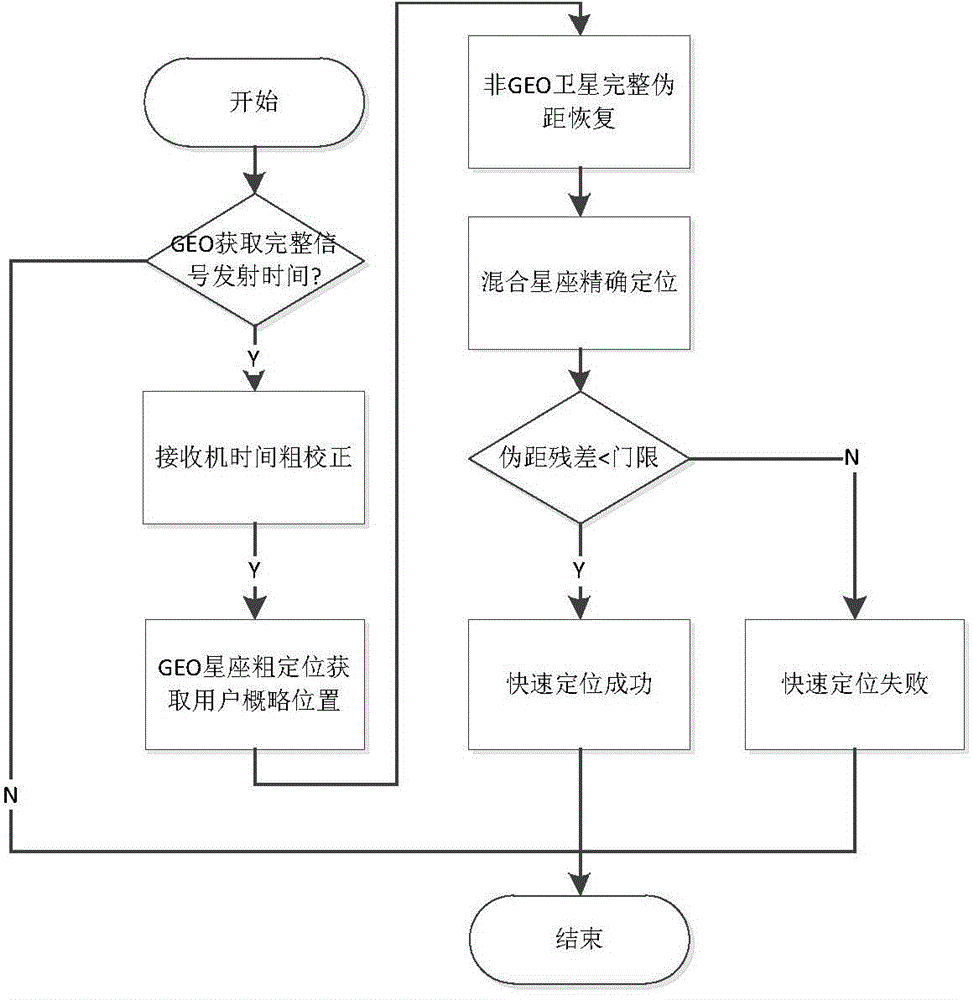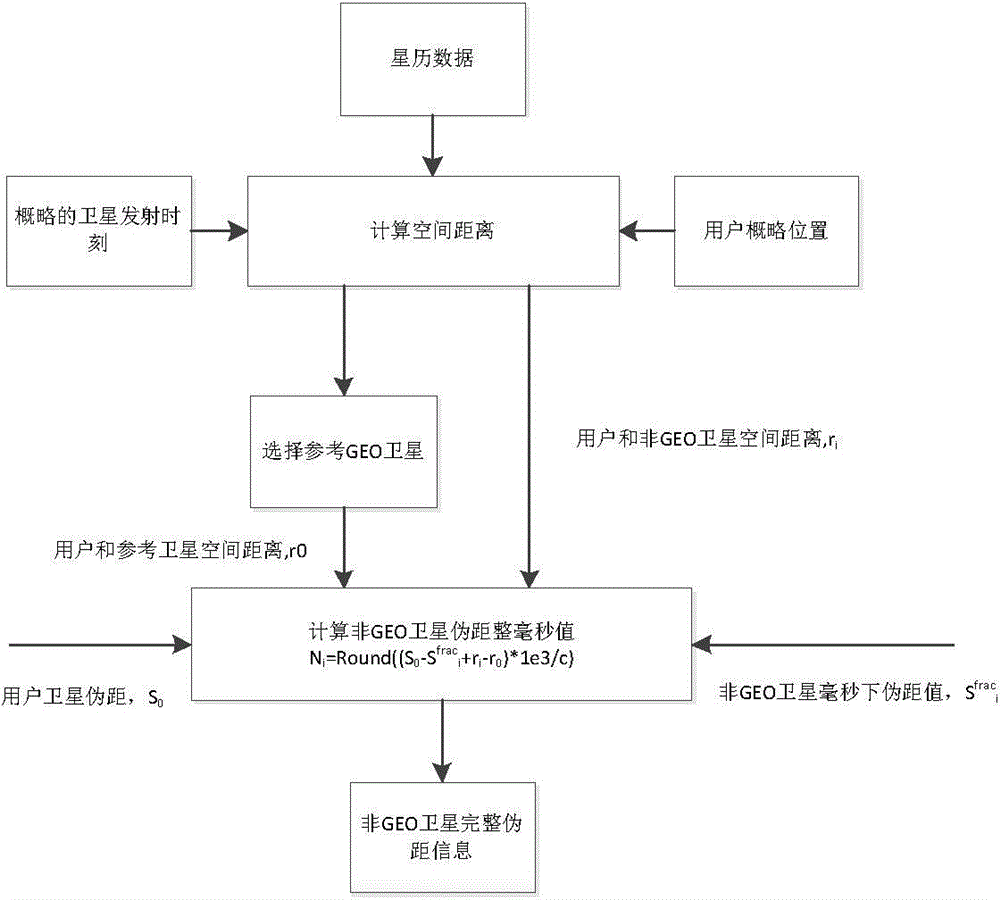Quick locating method based on GEO constellation coarse location for Beidou receiver
A positioning method and rough positioning technology, applied in satellite radio beacon positioning systems, measuring devices, instruments, etc., can solve the problem of increased search calculations
- Summary
- Abstract
- Description
- Claims
- Application Information
AI Technical Summary
Problems solved by technology
Method used
Image
Examples
Embodiment Construction
[0063] Below in conjunction with accompanying drawing, the present invention is described in detail:
[0064] figure 1 It is a schematic flow diagram of the principle of the technical solution of the present invention, as shown in the figure, comprising the following steps:
[0065] Step S1, judging whether the frame synchronization of the GEO satellite is completed, and acquiring the launch time of the satellite. After the navigation signal is captured and tracked, the signal must be bit-synchronized and frame-synchronized to obtain the signal launch time and achieve the final positioning.
[0066] The invention can perform fast positioning after the GEO satellite realizes the frame synchronization. The bit synchronization method can use the traditional histogram method, and the frame synchronization algorithm can also use the conventional four-step inspection method to check whether the frame synchronization is completed: 1. Search for the frame synchronization code; 2. Ve...
PUM
 Login to View More
Login to View More Abstract
Description
Claims
Application Information
 Login to View More
Login to View More - R&D
- Intellectual Property
- Life Sciences
- Materials
- Tech Scout
- Unparalleled Data Quality
- Higher Quality Content
- 60% Fewer Hallucinations
Browse by: Latest US Patents, China's latest patents, Technical Efficacy Thesaurus, Application Domain, Technology Topic, Popular Technical Reports.
© 2025 PatSnap. All rights reserved.Legal|Privacy policy|Modern Slavery Act Transparency Statement|Sitemap|About US| Contact US: help@patsnap.com



